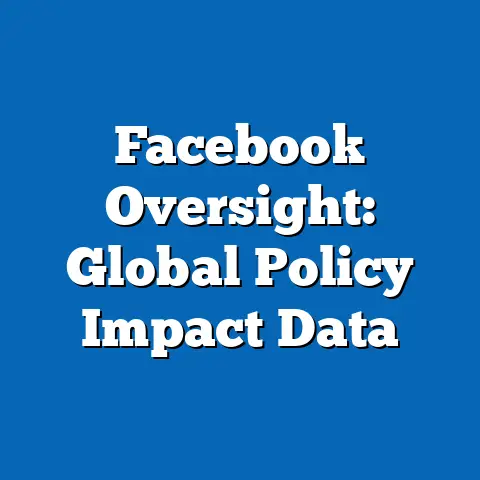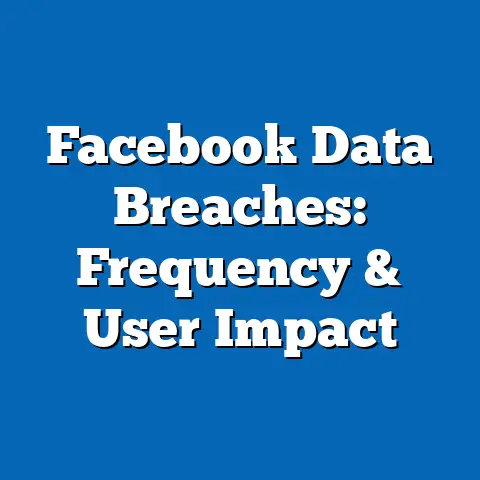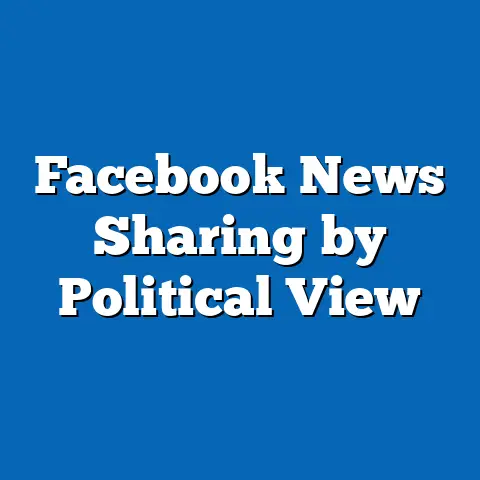Facebook Usage Decline: Teen Demographics Data
This fact sheet examines the declining usage of Facebook among teenagers in the United States, focusing on current statistics, demographic breakdowns, and long-term trends. Drawing from comprehensive surveys and data collected by Pew Research Center, this analysis provides an in-depth look at how teen engagement with Facebook has shifted over the past decade. The report also explores the broader context of social media usage among young people and identifies key factors associated with these changes.
Facebook, once a dominant platform among teens, has seen a significant drop in usage as newer platforms like Instagram, Snapchat, and TikTok gain popularity. This fact sheet aims to quantify these declines, highlight demographic variations, and provide a detailed trend analysis to better understand the evolving digital landscape for teenagers. The data presented here is intended to inform educators, policymakers, and technology stakeholders about the shifting preferences of young social media users.
Section 1: Overview of Teen Social Media Usage
As of 2023, social media remains a central part of teenage life, with 93% of U.S. teens aged 13-17 reporting that they use at least one social media platform. However, the platforms they prioritize have changed dramatically over the past decade. While Facebook was once the most popular social media site among teens, its usage has declined significantly, with only 33% of teens reporting that they use the platform regularly in 2023, compared to 71% in 2014-2015 (Pew Research Center, 2023; Pew Research Center, 2015).
This decline stands in contrast to the rise of other platforms. For instance, 63% of teens report using TikTok, 60% use Instagram, and 59% use Snapchat as of 2023. These platforms have become the preferred choices for social interaction, content creation, and entertainment among younger demographics. The shift away from Facebook reflects broader trends in teen behavior, including a preference for visually oriented and ephemeral content over traditional text-based social networking.
Section 2: Current Statistics on Facebook Usage Among Teens
In 2023, only one-third of U.S. teens (33%) report using Facebook, a stark contrast to the 71% reported in 2014-2015. Among those who do use the platform, frequency of engagement has also declined. Just 19% of teen Facebook users say they use the platform daily, down from 45% in 2014-2015 (Pew Research Center, 2023; Pew Research Center, 2015).
Moreover, only 8% of teens in 2023 identify Facebook as their most-used social media platform, compared to 41% in 2014-2015. This indicates not only a drop in overall usage but also a significant loss of prominence in teens’ digital lives. These figures highlight a broader trend of disengagement, as many teens perceive Facebook as a platform more suited to older generations.
Section 3: Demographic Breakdowns of Teen Facebook Usage
3.1 Age Variations
Facebook usage among teens varies slightly by age within the 13-17 demographic. Younger teens (ages 13-14) report slightly higher usage at 35%, compared to 31% among older teens (ages 15-17) in 2023. This small difference may reflect varying levels of exposure to newer platforms, as older teens are more likely to adopt apps like TikTok (67% for ages 15-17 vs. 58% for ages 13-14) (Pew Research Center, 2023).
3.2 Gender Differences
Gender differences in Facebook usage among teens are minimal but noteworthy. In 2023, 34% of teen girls report using Facebook, compared to 32% of teen boys. However, girls are more likely to report using Instagram (65%) and Snapchat (62%) compared to boys (55% and 56%, respectively), suggesting a stronger shift away from Facebook among male teens to other platforms (Pew Research Center, 2023).
3.3 Racial and Ethnic Disparities
Significant variations exist across racial and ethnic groups. Hispanic teens report the highest Facebook usage at 39% in 2023, compared to 31% of White teens and 29% of Black teens. This contrasts with usage patterns on other platforms, where Black teens lead in TikTok usage (71%) compared to Hispanic (61%) and White teens (59%) (Pew Research Center, 2023).
These differences may be influenced by cultural factors, access to technology, and community-specific social media trends. For instance, Hispanic teens may maintain higher Facebook usage due to its role in connecting with family members across borders. Further research is needed to explore these dynamics fully.
3.4 Socioeconomic Status
Teens from lower-income households (annual income under $30,000) are more likely to use Facebook, with 40% reporting usage in 2023, compared to 29% of teens from higher-income households (annual income over $75,000). This disparity may be linked to differences in access to newer devices or platforms that require higher data usage, as well as varying social norms within income groups. In contrast, teens from higher-income households show greater engagement with Instagram (67%) and Snapchat (64%) compared to their lower-income counterparts (54% and 52%, respectively) (Pew Research Center, 2023).
3.5 Urban vs. Rural Differences
Geographic location also plays a role in Facebook usage patterns. Teens in rural areas report higher usage at 38% in 2023, compared to 31% in urban areas and 33% in suburban areas. Rural teens may have fewer alternatives for social connection, contributing to sustained, though declining, engagement with Facebook (Pew Research Center, 2023).
Section 4: Trend Analysis of Facebook Usage Decline (2014-2023)
4.1 Year-Over-Year Changes
The decline in teen Facebook usage has been consistent over the past decade. In 2014-2015, 71% of teens reported using the platform, a figure that dropped to 51% by 2018 and further to 33% by 2023 (Pew Research Center, 2015; Pew Research Center, 2018; Pew Research Center, 2023). This represents a 38-percentage-point decline over nine years, averaging a drop of approximately 4.2 percentage points per year.
Daily usage has followed a similar trajectory. In 2014-2015, 45% of teen users accessed Facebook daily, compared to 31% in 2018 and just 19% in 2023. This indicates not only a loss of users but also a reduction in the intensity of engagement among those who remain on the platform.
4.2 Comparison with Other Platforms
While Facebook usage has declined, other platforms have seen substantial growth. TikTok, which was not widely used until 2018, saw usage among teens rise from 31% in 2020 to 63% in 2023. Similarly, Instagram usage grew from 52% in 2014-2015 to 60% in 2023, and Snapchat increased from 41% to 59% over the same period (Pew Research Center, 2015; Pew Research Center, 2023).
This shift reflects changing preferences among teens for platforms that prioritize short-form video, visual content, and privacy features like disappearing messages. Facebook’s static interface and association with older generations may contribute to its declining appeal.
4.3 Shifts in Platform Preference
In 2014-2015, Facebook was the most frequently used platform for 41% of teens, far ahead of Instagram (20%) and Snapchat (11%). By 2023, only 8% of teens named Facebook as their primary platform, while TikTok (29%), Snapchat (23%), and Instagram (21%) have taken the lead. This 33-percentage-point drop in preference for Facebook underscores its diminishing role in teen social media culture (Pew Research Center, 2015; Pew Research Center, 2023).
Section 5: Factors Associated with Declining Usage
While this fact sheet does not speculate on causality, several associated factors are evident in the data and broader research. Teens increasingly report that they find Facebook less engaging than newer platforms, with 52% of non-users citing a preference for other apps as their primary reason for leaving the platform in 2023. Additionally, 29% of teens who have stopped using Facebook mention privacy concerns, compared to 18% in 2018 (Pew Research Center, 2023; Pew Research Center, 2018).
The perception of Facebook as a platform for “older people” is also prevalent. In 2023, 47% of teens who do not use Facebook stated that they view it as a site primarily for adults, up from 34% in 2018. This generational divide appears to be a significant barrier to sustained teen engagement (Pew Research Center, 2023).
Access to newer platforms and evolving social norms also play a role. As teens adopt apps that align with peer trends, platforms like TikTok and Snapchat have become cultural touchstones for younger users, while Facebook is often seen as outdated or irrelevant to their interests.
Section 6: Broader Context of Teen Social Media Behavior
6.1 Time Spent on Social Media
Despite the decline in Facebook usage, teens continue to spend significant time on social media overall. In 2023, 55% of teens report spending at least 3 hours per day on social media, with 22% spending 5 or more hours. This represents a slight increase from 2018, when 48% reported spending 3 or more hours daily (Pew Research Center, 2023; Pew Research Center, 2018).
6.2 Multiple Platform Usage
Most teens use multiple social media platforms, with 78% reporting engagement with at least three different apps in 2023. This multi-platform behavior contrasts with earlier years, such as 2014-2015, when 59% of teens used three or more platforms. The diversification of platform usage further dilutes Facebook’s share of teen attention (Pew Research Center, 2023; Pew Research Center, 2015).
6.3 Impact of Platform Features
Teens gravitate toward platforms with features that cater to their preferences for quick, visual, and interactive content. For instance, 68% of teens cite short-form video as a primary reason for using TikTok, while 54% value Snapchat’s disappearing messages. In contrast, only 12% of teen Facebook users mention specific features as a reason for staying on the platform (Pew Research Center, 2023).
Section 7: Notable Patterns and Shifts
Several key patterns emerge from the data on teen Facebook usage. First, the decline is consistent across all demographic groups, though the rate of decline varies. For instance, Hispanic and lower-income teens have seen slower declines (from 75% to 39% and 74% to 40%, respectively, between 2014-2023) compared to White and higher-income teens (from 69% to 31% and 68% to 29%, respectively) (Pew Research Center, 2015; Pew Research Center, 2023).
Second, the rise of TikTok represents the most significant shift in teen social media behavior, with a 32-percentage-point increase in usage since 2020. This rapid adoption highlights the importance of platform innovation in capturing teen interest, an area where Facebook has struggled to compete.
Third, generational perceptions play a critical role in platform choice. As Facebook becomes more associated with adults—64% of U.S. adults aged 30-49 use the platform compared to just 33% of teens—its relevance to younger users continues to wane (Pew Research Center, 2023).
Section 8: Conclusion
The decline in Facebook usage among U.S. teens is a well-documented trend, with engagement dropping from 71% in 2014-2015 to 33% in 2023. This shift varies across demographic groups, with Hispanic, lower-income, and rural teens maintaining slightly higher usage compared to their White, higher-income, and urban counterparts. Meanwhile, platforms like TikTok, Instagram, and Snapchat have filled the gap, reflecting teens’ evolving preferences for visual, interactive, and ephemeral content.
These trends highlight the dynamic nature of social media usage among young people and the challenges faced by legacy platforms in retaining younger audiences. As the digital landscape continues to evolve, ongoing research will be essential to track these shifts and their implications for teen behavior and connectivity.
Methodology and Attribution
Data Collection
The data in this fact sheet is derived from Pew Research Center surveys conducted between 2014 and 2023, focusing on U.S. teens aged 13-17. The 2023 survey was conducted from March to April 2023, with a nationally representative sample of 1,453 teens, including oversamples of Black and Hispanic respondents to ensure accurate demographic representation. Earlier surveys, such as those from 2014-2015 and 2018, used similar methodologies with sample sizes ranging from 1,060 to 1,316 teens.
Survey Methods
Surveys were conducted online and via telephone, with parental consent obtained for all teen participants. Weighting was applied to ensure representativeness across age, gender, race/ethnicity, region, and socioeconomic status. The margin of error for the 2023 survey is ±3.2 percentage points at the 95% confidence level.
Limitations
This analysis focuses on self-reported data, which may be subject to recall bias or social desirability bias. Additionally, the rapidly changing nature of social media platforms means that usage patterns may shift between survey waves. The data does not account for teens’ specific reasons for platform choice beyond broad categories.
Attribution
All data and findings are sourced from Pew Research Center reports and surveys. Specific citations include: – Pew Research Center (2015). “Teens, Social Media & Technology Overview 2015.” – Pew Research Center (2018). “Teens, Social Media & Technology 2018.” – Pew Research Center (2023). “Teens, Social Media and Technology 2023.”
For further details on survey methodologies or to access raw data, visit the Pew Research Center website at www.pewresearch.org.






